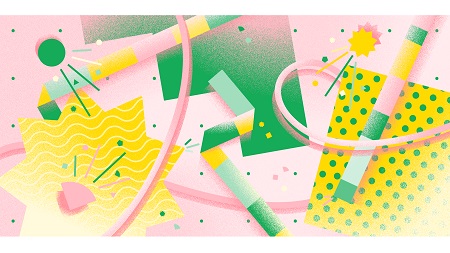
English | MP4 | AVC 1920×1080 | AAC 44KHz 2ch | 79 Lectures (6h 09m) | 2.43 GB
Everything you need to create your own augmented reality filters for Instagram and Facebook Camera using Spark AR.
In this course, you’ll learn everything you need to create your own augmented reality filters for Instagram and Facebook Camera using Spark AR from scratch.
From working with textures and materials, to adding your own interactions to trackers within the Patch Editor, to testing and launch, we’ll give you everything you need to create your own filters.
What you’ll learn
- How to work with Spark AR to make filters for Instagram and Facebook Camera.
- Working with textures, materials and animation sequences to create your own augmented reality experiences.
- Using the Patch Editor to add interactive elements and triggers to face and plane trackers.
- Working within a 3D environment and how to add 3D-rendered models to your project.
- How to extract and draw textures to create your own samplers and color shaders.
- How to test, submit and launch your own filters to Instagram and Facebook
Table of Contents
1 Welcome to New Romantic
2 Adding a face mesh and material
3 Making a texture in Figma and adding to our project
4 Using the Face Reference assets
5 Retouching skin
6 Adding a plane to the face tracker
7 Adding our real assets
8 Using a cutout mask and material
9 Testing and publishing our filter
10 Welcome to Happy vs Chill
11 Adding 2d text to a face tracker
12 Opening the Patch Editor
13 Putting text on the forehead the proper way
14 Adding logic blocks to change output
15 Adding a happy or surprised face
16 Testing and adding a delay
17 Welcome to Popout
18 Preparing our textures
19 Adding textures to meshes
20 Adding animation and transition patches
21 Branching our animations
22 Welcome to Metal Mask
23 Adding metallic material
24 Adding a 3d mask
25 Using the patch editor to rotate lighting
26 Welcome to Cone Head
27 Adding a cat model from Google Poly
28 Adding a cone to our foreheads
29 Adding a sheen effect to our filter
30 Introducing the head occluder
31 The face distortion block
32 Pitch-shifting the audio
33 Welcome to Eggs Is Eggs
34 Cutting out our users from the camera
35 Adding animation sequences from textures
36 Adding a start instruction
37 Adding a screen tap and option picker
38 Adding text to debug
39 Welcome to Which Coding Language Are You?
40 Adding the question and answer planes
41 Adding a screen tap to toggle panels
42 Adding a switch that turns off after a delay
43 Adding interaction on camera record
44 Welcome to Bingo
45 Plane tracking with 3d models
46 Emitters and particle systems
47 Fixed target tracking with emitters
48 Welcome to Duotone
49 Replicating our camera texture
50 Altering hue, saturation and lightness
51 Using lightness to control the color mix
52 Adding a screen tap and option picker
53 Adding the picker UI
54 Welcome to Gradient Sampler
55 Making a gradient texture in Figma
56 Making the camera texture grayscale
57 Sampling the camera texture and gradient texture
58 Multiplying the gradient sample
59 Adding the slider UI
60 Adding an option picker on screen tap
61 Welcome to Warhol
62 Project setup
63 Adding a texture sampler to repeat
64 Increasing our sample on tap
65 Making our frame with a Patch Asset
66 Welcome to Super LUT
67 Color grading: the easy way
68 Creating our own patch asset
69 Adding a property to our patch asset, plus senders + receivers
70 Mapping RGB to a point on our LUT texture
71 Making our own look up table textures
72 Adding a screen tap and option picker
73 Welcome to Color Splitter
74 Picking colors by red, green and blue channels
75 Adding inputs to our patch asset
76 Blending color channels together
77 Adding movement to each channel
78 Adding a slider UI
79 Reusing the patch assets
Resolve the captcha to access the links!